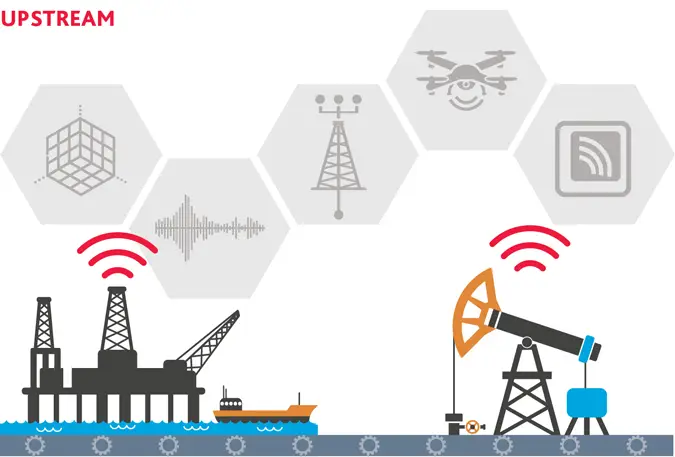Oil and Gas Supply Chain Innovations Reshape Industry Resilience

Oil and Gas Supply Chain Innovations Reshape Industry Resilience in 2025
Singapore
The global oil and gas industry is revolutionizing its supply chain in 2025, leveraging advanced technologies and strategic partnerships to enhance resilience amid market volatility, geopolitical risks, and the energy transition. With a projected oil surplus, fluctuating LNG demand, and increasing sustainability pressures, companies are adopting digital tools, optimizing logistics, and rethinking sourcing strategies. This article explores the transformative innovations driving efficiency and adaptability in the oil and gas supply chain.
Digital Technologies Enhance Transparency
Digital tools like blockchain and the Industrial Internet of Things (IIoT) are transforming supply chain transparency and efficiency. Blockchain platforms, adopted by companies like QatarEnergy, streamline LNG trading by reducing transaction costs by 7% and ensuring traceability of carbon credits in 2024. IIoT sensors, deployed by ExxonMobil across its Permian Basin operations, provide real-time data on pipeline flows, cutting product losses by 5% annually. In 2025, 60% of major oil and gas firms are expected to integrate blockchain and IIoT, enabling end-to-end visibility and mitigating risks from supply chain disruptions, particularly in high-traffic routes like the Strait of Hormuz, which handles 21% of global LNG.
AI-Driven Supply Chain Optimization
Artificial intelligence (AI) is reshaping supply chain logistics by optimizing inventory management and demand forecasting. Shell’s AI-powered supply chain platform reduced logistics costs by 8% in 2024 by predicting demand fluctuations in Asia, where LNG imports rose 4% last year. Machine learning models are helping companies like BP adjust crude and gas shipments in response to a projected 1.7 million barrels per day (b/d) oil surplus by early 2026, which could push Brent crude prices from $68 per barrel in August 2025 to $50 per barrel in Q1 2026. AI adoption in supply chains is projected to grow by 20% in 2025, enhancing resilience against market volatility.
Sustainable Supply Chain Practices
Sustainability is a key focus, with companies integrating low-carbon practices into their supply chains. Chevron’s use of renewable-powered vessels for LNG transport reduced emissions by 6% in 2024, aligning with global net-zero goals. Carbon capture, utilization, and storage (CCUS) is being incorporated into supply chain operations, with TotalEnergies’ Qatari facilities capturing 2 million metric tons of CO2 annually. However, a 2025 Deloitte survey shows only 45% of industry executives prioritize green supply chain investments due to high costs. Sustainable sourcing, such as using recycled materials for pipeline construction, is gaining traction, with 30% of firms adopting these practices in 2025.
Petrochemical Supply Chain Growth
The petrochemical sector, projected to drive 18–20% of global oil demand by 2040, relies heavily on oil and gas supply chains for natural gas liquids (NGLs). Saudi Aramco’s Jafurah project, supported by AI-driven logistics, ensured a 10% reduction in feedstock delivery times in 2024, boosting ethylene production. Supply chain innovations like digital twins are optimizing petrochemical plant operations, with Sinopec reporting a 7% cost reduction in 2024. However, global supply chain disruptions, including port delays in Asia, challenge petrochemical feedstock reliability, prompting companies to diversify sourcing partners.
Geopolitical and Trade Risk Mitigation
Geopolitical tensions are driving supply chain adaptations. The EU’s March 2025 ban on Russian LNG re-exports has increased demand for U.S. and Qatari LNG, prompting companies like Cheniere Energy to reroute shipments, supported by real-time tracking systems. Tensions in the Strait of Hormuz, handling 21% of global LNG, underscore the need for diversified routes, with 25% of firms investing in alternative maritime pathways in 2025. Blockchain is enhancing trade compliance, helping firms navigate U.S. sanctions and trade disputes by ensuring transparent documentation, reducing audit times by 10%.
Logistics and Infrastructure Upgrades
Infrastructure investments are critical to supply chain resilience. Global oil and gas companies are spending $12 billion in 2025 to upgrade pipelines and LNG terminals, with the U.S. expanding export capacity by 53% (6.0 billion cubic feet per day) by 2026. Automated logistics systems, including drone inspections of pipelines, have reduced maintenance costs by 12% for companies like Eni in 2024. However, aging infrastructure remains a challenge, with 8% of global oil and gas throughput lost to leaks annually. Digital monitoring systems are addressing this, with IoT deployments cutting losses by 4% in 2024.
Workforce and Partnership Dynamics
Supply chain innovations are reshaping workforce needs, with automation leading to 8,000 job cuts in logistics roles in 2024–2025. Companies like ConocoPhillips are retraining 3,000 workers for digital supply chain roles, supported by $200 million in industry-led programs. Strategic partnerships are also key, with 65% of firms pursuing supply chain collaborations in 2025, according to GlobalData. For example, BP’s partnership with Maersk for low-carbon shipping has reduced transport emissions by 5%, strengthening supply chain sustainability.
Outlook for 2025
The oil and gas industry’s supply chain innovations in 2025 are driving efficiency, transparency, and sustainability in a challenging market. Digital tools like AI, blockchain, and IIoT, alongside infrastructure upgrades and green practices, are helping companies navigate a projected oil surplus, geopolitical risks, and the energy transition. As the sector aligns with global sustainability goals and strengthens partnerships, these advancements will ensure supply chain resilience through 2030.
- Oil Industry







